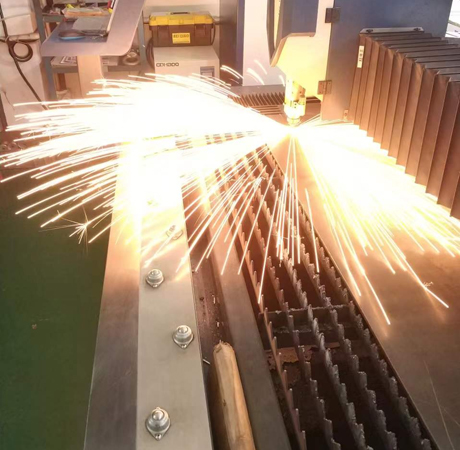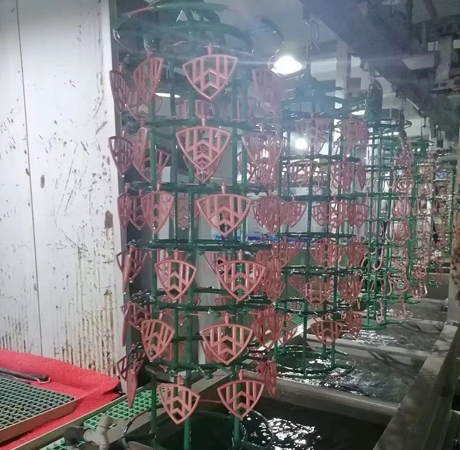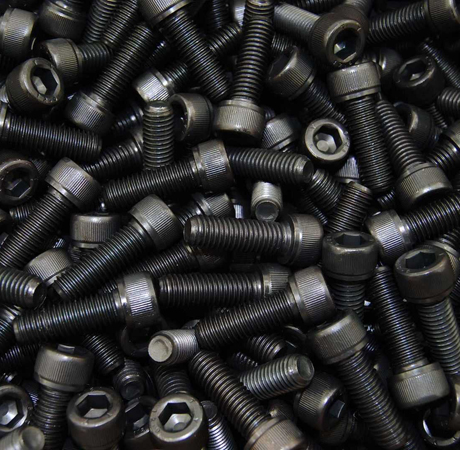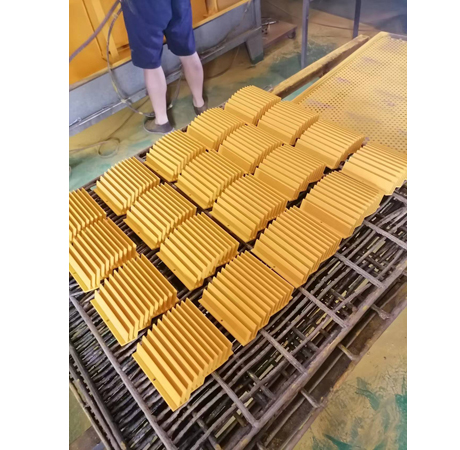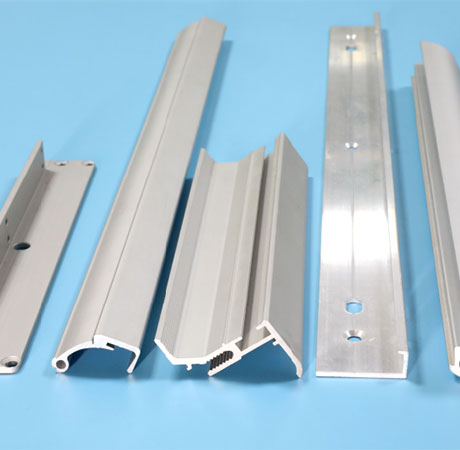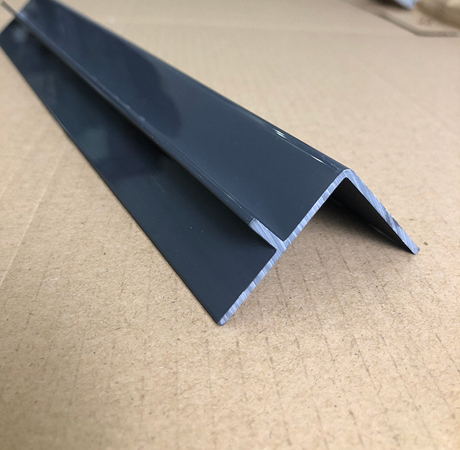Surface treatment is a process to artificially form a surface layer on the surface of the matrix material that is different from the mechanical, physical and chemical properties of the matrix. The purpose of surface treatment is to meet the requirements of corrosion resistance, wear resistance, decoration or other special functions of the product. Today, let's share some common surface treatment methods to see how many you know.
1. Polishing
Polishing refers to a processing method that uses mechanical, chemical or electrochemical effects to reduce the surface roughness of the workpiece to obtain a bright and flat surface. It refers to the surface modification of the workpiece by using polishing tools, abrasive particles or other polishing media. Polishing can not improve the dimensional accuracy or geometric shape accuracy of the workpiece, but aims to obtain a smooth surface or mirror luster, sometimes used to eliminate luster (matting). The polishing wheel is usually used as the polishing tool. The polishing wheel is generally made of multi-layer canvas, felt or leather, and its two sides are clamped with metal round plates. Its rim is coated with a polishing agent uniformly mixed with fine abrasive and grease. During polishing, the high-speed rotating polishing wheel (with a circumferential speed of more than 20 m/s) presses against the workpiece, so that the abrasive can roll and slightly cut the workpiece surface, thus obtaining a bright machined surface, and the surface roughness can generally reach Ra0.63~0.01 μ m; When a non greasy matting polishing agent is used, the bright surface can be matt to improve the appearance. For different polishing processes: rough polishing (basic polishing process), medium polishing (finishing process) and fine polishing (polishing process), selecting the appropriate polishing wheel can achieve the best polishing effect and improve the polishing efficiency.
2. Sandblasting
The process of cleaning and roughening the substrate surface by the impact of high-speed sand flow. The compressed air is used as the power to form a high-speed jet beam to jet the materials (copper ore sand, quartz sand, carborundum sand, iron sand, Hainan sand) to the surface of the workpiece to be treated at a high speed, so that the appearance or shape of the external surface of the workpiece surface changes. Due to the impact and cutting effects of the abrasive on the workpiece surface, the workpiece surface can obtain a certain degree of cleanliness and different roughness, so that the mechanical properties of the workpiece surface can be improved, Therefore, the fatigue resistance of the workpiece is improved, the adhesion between the workpiece and the coating is increased, the durability of the coating is extended, and it is also conducive to the leveling and decoration of the coating.
3. Wiredrawing
It is a surface treatment method to form lines on the surface of the workpiece by grinding products to achieve decorative effect. According to the different lines after wire drawing, it can be divided into: straight wire drawing, random wire drawing, ripple and spiral. Surface wiredrawing treatment is a surface treatment method that forms lines on the workpiece surface by grinding products to achieve decorative effect. Because surface wiredrawing treatment can reflect the texture of metal materials, it has been loved by more and more users and has been used more and more widely.
4. Anodic oxidation
An electrolytic oxidation process in which the surface of aluminum and aluminum alloy is usually converted into an oxide film with protective, decorative and other functional properties. From this definition, anodizing of aluminum only includes the process of forming anodic oxide film. The metal or alloy parts are used as anodes to form oxide films on their surfaces by electrolysis. The metal oxide film changes the surface state and properties, such as surface coloring, improving corrosion resistance, enhancing wear resistance and hardness, and protecting the metal surface. For example, aluminum anodizing, aluminum and its alloys are placed in the corresponding electrolyte (such as sulfuric acid, chromic acid, oxalic acid, etc.) as anodes, and electrolysis is carried out under specific conditions and under the action of impressed current. Aluminum or its alloy of the anode is oxidized, and a thin layer of aluminum oxide is formed on the surface, with a thickness of 5-30 microns, and a hard anodic oxide film of 25-150 microns. The anodized aluminum or its alloy has improved its hardness and wear resistance, which can reach 250~500 kg/mm2. It has good heat resistance. The melting point of the hard anodized film is up to 2320K. It has excellent insulation, and the breakdown resistance voltage is up to 2000V. It has enhanced its corrosion resistance ω= 0.03 NaCl salt spray will not be corroded after thousands of hours. There are a lot of micropores in the thin oxide film, which can absorb various lubricants, and is suitable for manufacturing engine cylinders or other wear-resistant parts; The membrane has strong microporous adsorption capacity and can be colored into various beautiful colors. Nonferrous metals or their alloys (such as aluminum, magnesium and their alloys) can be anodized. This method is widely used in mechanical parts, aircraft and automobile parts, precision instruments and radio equipment, daily necessities and architectural decoration. Generally speaking, aluminum or aluminum alloy is used as anode for anode, while lead plate is selected as cathode, and aluminum and lead plate are put together in aqueous solution, where there are sulfuric acid, oxalic acid, chromic acid, etc. for electrolysis to form an oxide film on the surface of aluminum and lead plate. Among these acids, the most widely used is the anodic oxidation with sulfuric acid.
5. Electrophoresis
The process is divided into anodic electrophoresis and cathodic electrophoresis. If the paint particles are negatively charged, the workpiece is an anode, and the paint particles deposit film on the workpiece under the action of electric field force is called anodic electrophoresis; On the contrary, if the paint particles are positively charged, the workpiece is a cathode, and the coating particles deposit on the workpiece to form a film, which is called cathodic electrophoresis.
The general process flow of anodic electrophoresis is: workpiece pretreatment (degreasing → hot water washing → rust removal → cold water washing → phosphating → hot water washing → passivation) → anodic electrophoresis → workpiece post-treatment (clean water washing → drying).
6. PVD
PVD is the abbreviation of Physical Vapor Deposition (PVD) in English. It refers to the use of low voltage and high current arc discharge technology to vaporize the target and ionize the vaporized substance and gas by gas discharge under vacuum conditions. With the acceleration of electric field, the vaporized substance and its reaction products are deposited on the workpiece. Physical vapor deposition (PVD) technology has the advantages of simple process, environmental improvement, no pollution, less consumption, uniform and dense film formation, and strong adhesion to the substrate. This technology is widely used in aerospace, electronics, optics, machinery, architecture, light industry, metallurgy, materials and other fields. It can prepare films with wear resistance, corrosion resistance, decoration, conductivity, insulation, photoconductivity, piezoelectricity, magnetism, lubrication, superconductivity and other characteristics.
7. Electroplating
Electroplating is the process of plating a thin layer of other metals or alloys on some metal surfaces by using the principle of electrolysis. It is the process of using electrolysis to attach a layer of metal film to the surface of metal or other materials to prevent metal oxidation (such as corrosion), improve wear resistance, conductivity, reflectivity, corrosion resistance (copper sulfate, etc.) and improve aesthetics. The outer layer of many coins is also electroplated.
8. Etching
The commonly referred to etching is also called photochemical etching, which refers to removing the protective film of the area to be etched after exposure, plate making and development, contacting the chemical solution during etching, so as to achieve the effect of dissolving corrosion, forming concave convex or hollow molding.
9. Spraying
Spraying is a coating method that is applied to the surface of the object to be coated by means of a spray gun or a disc atomizer, and by means of pressure or centrifugal force, it is dispersed into uniform and fine droplets. It can be divided into air spraying, airless spraying, electrostatic spraying and various derivative methods of the above basic spraying forms, such as large flow low pressure atomization spraying, thermal spraying, automatic spraying, multi group spraying, etc. The spraying operation has high production efficiency and is suitable for manual operation and industrial automation production. It is widely used in hardware, plastics, furniture, military industry, ships and other fields. It is the most popular coating method nowadays; Spraying operation requires a dust-free workshop with an environmental requirement of one million to one hundred. Spraying equipment includes spray guns, spray booths, paint supply rooms, curing ovens/drying ovens, spraying workpiece conveying equipment, fog elimination and waste water, waste gas treatment equipment, etc. Large flow and low pressure atomization spraying is characterized by low atomization pressure and low air jet velocity. Low atomization coating running speed improves the rebound of coating from the surface of the coating. The painting rate is increased from 30%~40% of ordinary air spraying to 65%~85%. In the finishing of light leather, spray the finishing on the leather surface with a spray gun or a shotcrete machine.
10. Radium carving
Also called laser engraving or laser marking, it is a surface treatment process using optical principles.
The high intensity focused laser beam emitted by the laser is used at the focal point to oxidize the material and thus process it The effect of marking is to expose the deep substance through the evaporation of surface substance, or to trace the chemical and physical changes of surface substance caused by light energy, or to "carve" traces by burning some substances with light energy, or to show the required etched figures and words by burning some substances with light energy.











